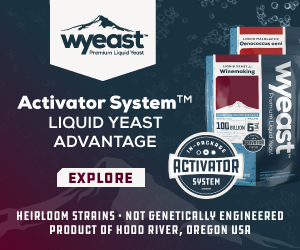Q
In
the above situation, what do you suggest I do? Do you agree that I
should conduct MLF on my wines considering their high-pH
characteristics?
A
First off, glad your
Viognier got better! That’s awesome you’re doing both reds and whites,
it’s fun to try a lot of different kinds of wines. Well, I hear you
about heat — I grow some grapes in Paso Robles region of California and
we definitely have high pH problems as it gets so hot. For your Texan
reds, even though the pH is creeping up at 3.7 post-primary
fermentation, I still encourage MLF in this situation because aging red
wines are always a risk for in-barrel or in-bottle MLF, both of which
can cause off aromas and flavors and can ruin your wine.
Q
What is your absolute top-end pH that you personally will not go above in a finished red wine?

A
I
don’t like to go above 3.85 at bottling, though that means you need to
really have great sanitation, no headspace, and minimize oxygen
exposure. It’s also not a safe pH to be storing wine in barrels for two
years. You could do what some high-end Napa Valley producers do — store
their wine for long term aging at 3.55–3.6 pH, then add carbonate about a
month before bottling to adjust pH up to around 3.8-ish. If you sterile
filter and bottle with free SO2 of around 28 ppm or so, you’ll have
little chance of anything cropping up in the bottle.
Q
And,
if you end up with a wine around pH 3.8 that tastes good as-is, what do
you consider to be top-end [sulfite]? Sulfite efficacy charts I refer
to from winemakermag.com/sulfitecalculator indicates I need around 100 mg/L FSO2 in order to be protective but that has its downside on aroma, flavor,
and color. These are my WWAD questions (What would Alison do)?
A
Hahaha, you’re funny. Again, you could store at a lower pH so you wouldn’t have to use so much SO2 over the wine’s lifetime, then raise the pH right before bottling.
Storing long-term at 3.8 pH really isn’t safe and I would definitely go
down to a 3.6–3.65. A pH 3.8 for bottling, as I mention above, isn’t
unusual for big reds — and then I wouldn’t bottle with more than 30 ppm
FSO2. I know it’s not correct from a molecular SO2 level, but seriously, it’s really difficult to achieve the holy grail of 0.8 molecular SO2,
(or 0.5 recommended for red wines) as the charts would have you try for
and not have your wine’s flavor and aroma suffer. So I (and most other
commercial winemakers I know) would never even try for this level. We
angle for that delicate balance between antioxidant and microbial
protection for our wines and overall quality. This is why great
sanitation, as well as having a handle on what kinds of microbes live in
your cellar and wines while aging, can be really important information
to have. It’s also why filtering finished wines before bottling isn’t a
bad idea. If you filter your wine it’ll allow you to have slightly lower
molecular SO2 levels over a wine’s lifetime but especially right before bottling.



